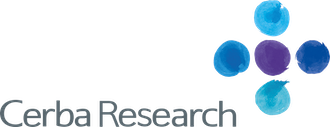Immunohistology (IHC) assays are a way of visualizing and examining proteins in tissues. The technique is key to precision cancer drug development, allowing researchers to understand how the disease affects the body and how well treatments perform.
By revealing tumor characteristics, IHC assays can help to forecast cancer treatment response, offering clues as to how a cancer might respond to a specific treatment. Using IHC, researchers can monitor how effectively treatments are working to get rid of cancer. IHC is also used to diagnose the condition and determine prognosis.
In this article, we look at the importance and role of IHC assays in precision cancer drug development.
Applications
IHC’s most common applications in clinical research and clinical settings include the diagnosis of cancers, as certain tumor antigens are expressed ‘de novo’ (meaning starting again) or up-regulated (an increase of cellular components) in specific cancers. The technique is used for predicting response to therapy in two significant tumors – prostate and carcinoma of the breast.
In pathology, there is an important role for IHC assays in looking for signs of disease in tissue samples to diagnose medical conditions. IHC is used in neuropathology, oncologic pathology, and hematopathology. By applying specific antibodies, IHC can also confirm infections in tissues. The technique is also used in fundamental biological processes for determining specific gene product function, subclassifying neurodegenerative disorders, and detecting axonal injury in brain trauma.
Immunohistochemistry Assay Protocol Development
Simplex and multiplex IHC protocols can be integral to the success of clinical studies. IHC analysis of biomarker expression at the protein level with spatial context is considered the gold standard.
The high-quality validation of IHC laboratory tests – typically a collaborative exercise involving the sponsor and central lab scientists – is important in many clinical trials, as is the optimization process that follows.With over 250 off-the-shelf human IHC biomarkers to offer, spanning a broad area of research, Cerba Research is a leader in supporting IHC assays for clinical trials. Our service includes technology transfer, vital for global trials, and a wide choice of in vitro diagnostics (IVD) platforms.
Combining Off-the-Shelf and Customizable Assays
In clinical trials, combining off-the-shelf and customizable IHC assays can be a cost-effective way to get the best results.It is recognized that biomarkers can triple the success rate of drug development. Being able to access a wide range of off-the-shelf assays – such as the range of 250 pre-defined assays provided by Cerba Research – can benefit clinical trials with cost-effectiveness. Combining access to these resources with the ability to customize where necessary – guided by the experts in laboratory services and assay development – can ensure that the customer has the right solutions for the needs of their project.
IHC Antibody Development Selection
The selection of IHC antibodies is an important part of the IHC assay process. Factors such as whether an antibody will work in IHC if it is specific (ensuring that the antibody recognizes the target protein of interest) and the selection of a primary antibody based on host (where fluorescent detection is concerned), must be considered.
Cerba Research supports clients in confirming or refuting antibody specificity with custom controls that have been generated in our cell culture lab. To guarantee the best candidates are selected for binding to Formalin-Fixed Paraffin-Embedded (FFPE) tissue (which preserves biopsy specimens), Cerba Research’s proprietary Histoselect® solution screens hybridomas and phage-display clones directly by IHC. This high-throughput screening method negates the requirement to pre-screen by ELISA or flow cytometry.
Combining IHC and IF
Like IHC, immunofluorescence (IF) is a technique that uses antibodies for the detection of cell-associated antigens and the detection of data relating to the expression, distribution, and localization of a target protein.
The main difference between the two techniques is how they visualize proteins. IHC uses enzymes which produce color reactions, while IF utilizes fluorescent dyes.
Despite their similarities, the two services are complementary to each other, providing different information on the same sample that helps build a more robust picture. Typically, IF provides higher-resolution imaging compared to IHC. This is due to fluorescent microscopy’s properties. On the other hand, diagnostic pathology has seen a wider adoption of IHC than IF, as it is more compatible with histological samples.
Ultimately, the best combination will be a method that answers research questions most effectively.
Troubleshooting Well-Known Limitations of IHC
There are recognized limitations of IHC, which can be worked around in many cases. Unsatisfactory or patchy results, including a poor signal, is one of the most tricky issues to circumnavigate. Among the recommended strategies are; to increase the concentration of the primary antibody and incubation time; to try an antigen retrieval protocol that is more aggressive; or to use methods to add signal amplification. If results continue to be suboptimal, it may be advised to obtain a new primary antibody from another vendor.Another issue that typically needs to be overcome in IHC is unwanted background staining. Background staining can be reduced by using 5-10% normal goat serum or casein to block the tissue before a primary antibody is applied.
Conclusion
IHC is already used in precision drug development to great effect, guiding oncologists in optimizing therapy for patients. The technique does this by forecasting cancer treatment response and monitoring drug efficacy. IHC is also being increasingly used to obtain predictive and prognostic information about cancer.
The complex nature of cancer – and the number of interactions involved with the tumor microenvironment – means that multiplex IHC approaches are becoming increasingly attractive to biotechnology companies. As IHC techniques advance, they are utilizing technologies such as AI for the quantification and digitization of large data volumes produced by these multiplex approaches.
Why Cerba Research?
Offering a dedicated team of experienced scientists, a large catalog of off-the-shelf assays, custom protocol development, and a global network of laboratories; Cerba Research is a leader in providing IHC program support.
Do you require support for your clinical trial? Get in touch with us today.

